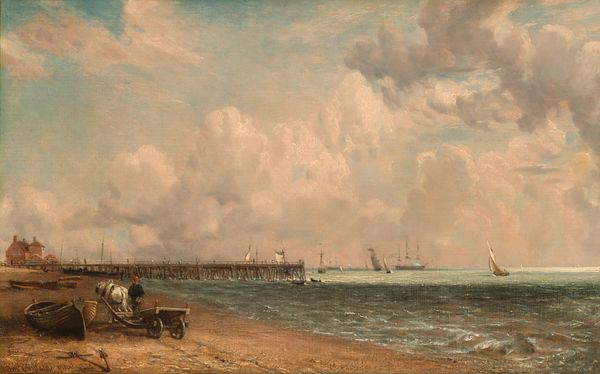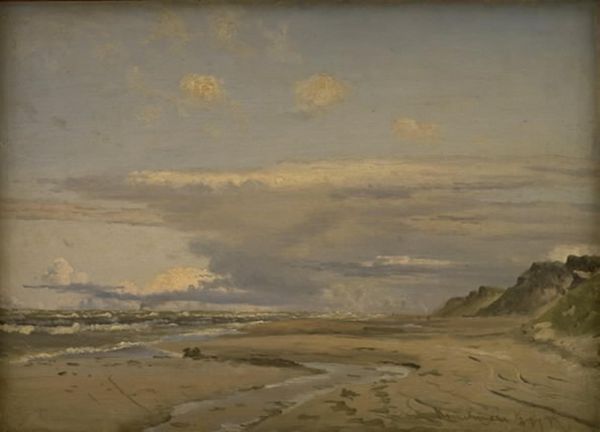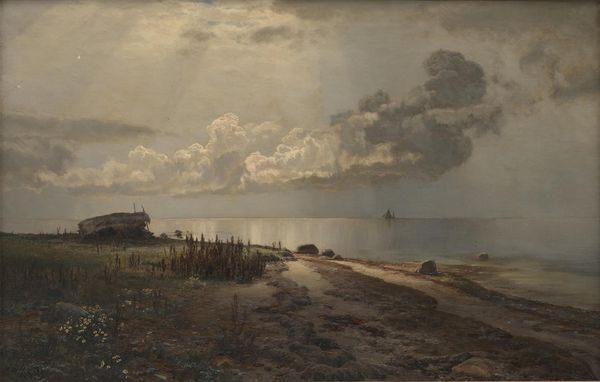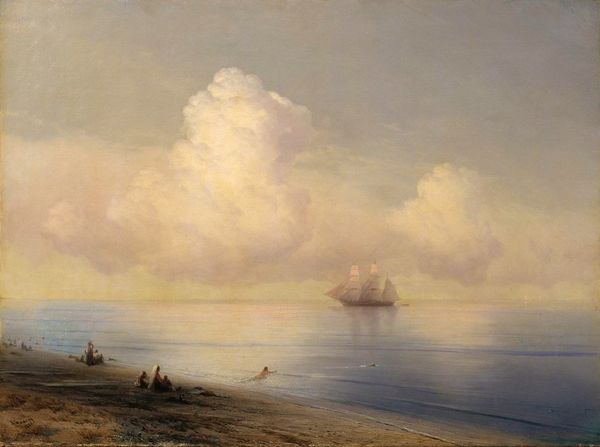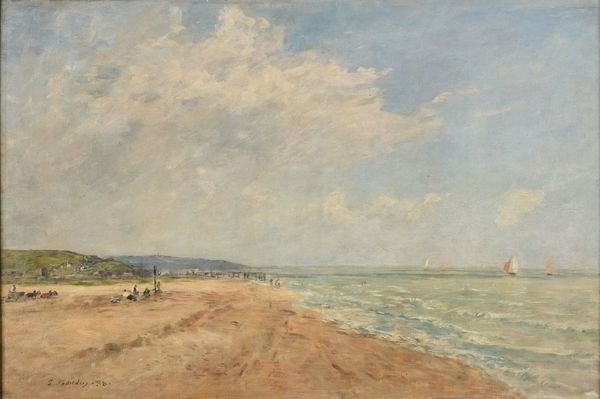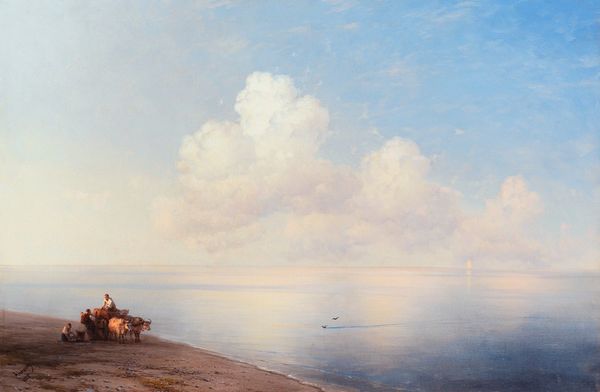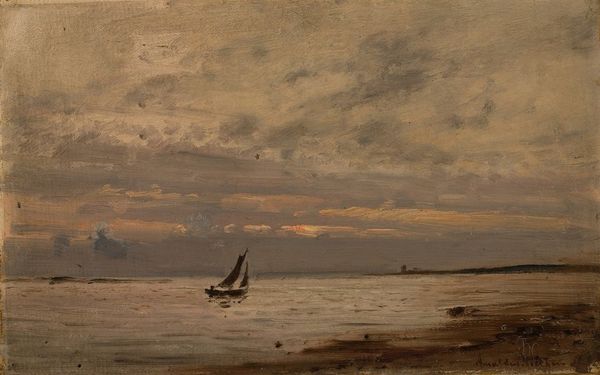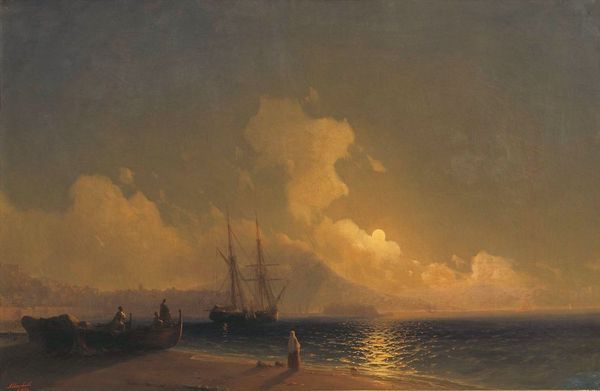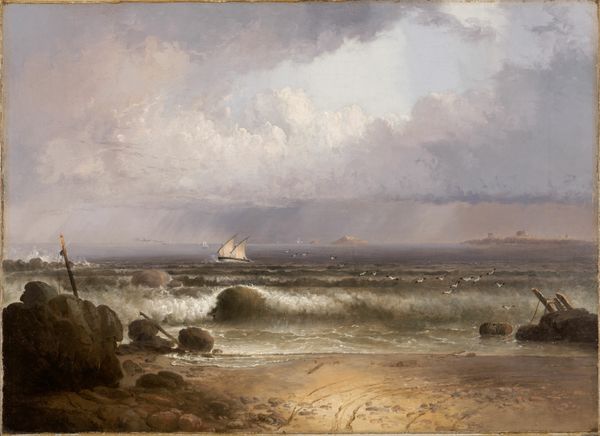
plein-air, oil-paint
#
plein-air
#
oil-paint
#
landscape
#
oil painting
#
romanticism
#
cityscape
#
realism
Copyright: Public Domain: Artvee
Editor: This is John Constable’s "Harwich - The Low Lighthouse and Beacon Hill," created around 1820 using oil paint. The overwhelming sky dominates the composition; the clouds feel incredibly active, almost mirroring the movement of the sea. How would you describe the painting's organization and how it creates meaning? Curator: The organization hinges on a carefully calibrated balance between horizontal and vertical elements. The low horizon line emphasizes the immensity of the sky, filled with cumuliform clouds meticulously rendered with gradations of tone. Observe how the artist's brushstrokes model those formations. It gives a unique insight into a particular system for observing nature. Editor: That’s interesting! It almost feels like the sky is the main subject, rather than the land. What about the relationship between light and shadow? Curator: The dramatic interplay of light and shadow creates a dynamic spatial experience, further enhanced through the manipulation of texture achieved by impasto and the smooth gradations in value. This suggests Constable was attuned to the contemporary discourse around perception and empiricism. What about the materiality of the pigment itself? How does that contribute? Editor: Now that you mention it, the thick layering of paint really captures the texture of the clouds. I can see how that connects to this idea of observed nature and Constable's unique application of the empiricist trend of his era. Curator: Exactly. In examining Constable's formal choices we glean insights into the aesthetic values and intellectual climate of his era. A powerful, material exploration! Editor: I appreciate how focusing on brushstroke and the play of light opens up a different interpretation beyond the historical context of Romanticism!
Comments
No comments
Be the first to comment and join the conversation on the ultimate creative platform.


